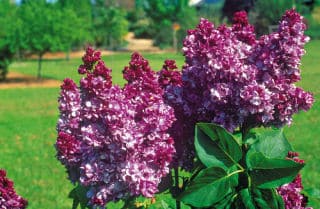

Colored and fragrant, lilac is a shrub that will do wonders in letting you forget about harsh winters: its blooming is greatly increased when when winters are cold!
Lilac (Syringa vulgaris) belongs to the great Oleaceae family which also includes the olive tree and jasmine. Lilac plants sold in horticulture stores are often cultivars that are hybrids produced from common lilac. Today, there are a great many different shapes and hues for lilac, a far cry from the strictly white or violet flowers in the gardens of old.
Lilac blooms towards end of April, its fragrant perfume signals the end of the freezing and if you have a vegetable patch, its first flowers remind you that the time has come to plant your potatoes.
Choose a strong, vigorous lilac with good roots and a few branches already, this is an indication that it will resist pests well. Before deciding where to place it, remember that your shrub requires well drained soil, with a neutral to slightly alkaline soil. Remember to give it a prize place in the sun if you wish to benefit from luxurious blooms.
Settle in your shrub in spring, this will give it the time in needs to grow strong before the first winter. To succeed in your planting, try to enrich the soil with organic compost. Root dip is great before planting to avoid the roots drying up and to speed up settling in. Once planting is done, patience is what you’ll need: it may take several years for it to bloom.
Lilac is a shrub that requires constant attention, if you don’t want to see it wilt or die because of certain diseases (downy mildew, bacterial diseases…).
During the first years,
 Prune it either just before the buds burst or in fall after leaves have fallen off trees.
Prune it either just before the buds burst or in fall after leaves have fallen off trees.M.-C. H
©AlbrechtFietz/Pixabay, Truffaut